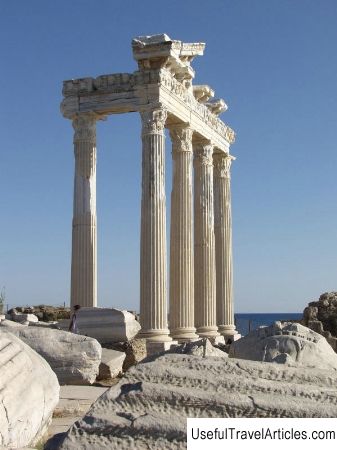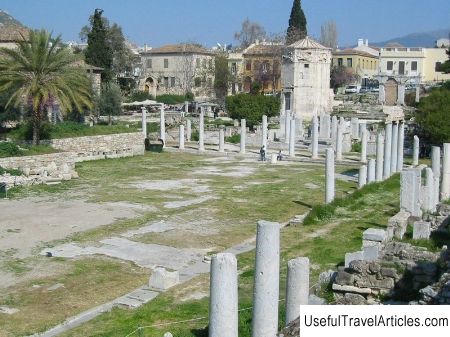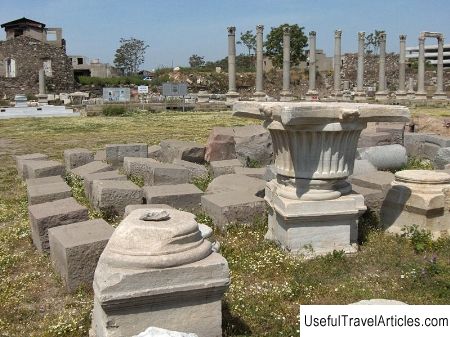Agora description and photos - Turkey: Side
Rating: 7,8/10 (800 votes) 
Agora description and photo - Turkey: Side. Detailed information about the attraction. Description, photographs and a map showing the nearest significant objects. The name in English is Agora. Photo and descriptionAgora was the name of the market square in ancient Greek policies, which was a place of general civil meetings (they were also called agoras). Usually, in a square located in the city center, there was a central city market, divided by different types of goods into "circles" and government offices. As a rule, the agora was surrounded by galleries with artisan workshops, temples, and sometimes statues, erected around the perimeter of the square. Often, agoras had a quadrangular projection, with columns located at the edges. There were many shops of various kinds in the agoras. Very often this area was the economic and administrative center of the city. Agora in Side is located near the Side Museum. Only a few columns have survived to this day, as well as the foundation of an ancient temple. In ancient times, Side had two agoras (squares). One of the squares still exists today. Side was a large shopping center. There was a huge slave market here. The agora in Side was especially famous for its beautiful slaves. The surviving agora is located in the north-west of the colonnaded street and practically merges with the theater stage. The entrance to it lies through the gate, which is called propylion (colonnaded monumental entrance), located opposite the present museum. It is surrounded on all sides by granite columns, which have the order "atik-ion" in their pedestals, and the order "corinth" on the tops. After the architrave, the sloping roof is wooden, and in the four corners of the agora there are pedestals with statues (exedra). Behind the southwestern exedra, merging with the stage of the theater, there was a semicircular monumental structure - toilets (latrium), covered with a vault. This is the only fairly well-preserved ancient toilet in Anatolia and a very beautifully decorated one. It has twenty-four seats, marble walls and mosaics on the floor. The sewage system for waste water was located under the stone seats of the toilet, and in front of it there is an open water canal with fresh water, which ensured cleanliness. Agora at one time had two entrance gates, which were closed by walls. The Agora in Side and all other structures in it were erected in the second century AD. It was built specifically near the theater, on the recommendation of Vitruvius, an ancient Roman architect, so that theater spectators could take refuge in sudden rainfall. Near its southeastern wall was a road leading to the second agora of the city. The shops along the edges of this street were destroyed during the construction of the Philipus Atius wall. In the center of the square-shaped square, you can see traces of the circular temple of the goddess of luck and chance, Tyche. She, according to legend, ruled the fate of the city. In honor of the goddess, a temple with a place of worship was erected, around it are columns with cornices.     We also recommend reading Genoese (Psyrtskhinskaya) tower description and photos - Abkhazia: New Athos Topic: Agora description and photos - Turkey: Side. |




